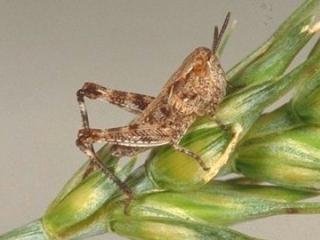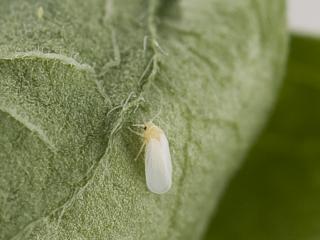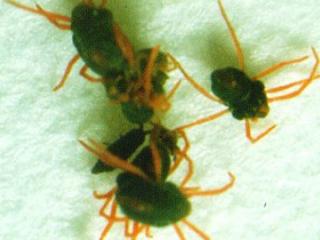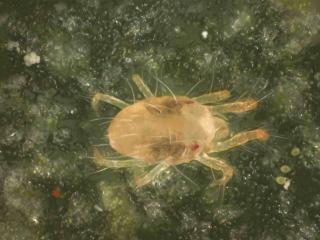Grasshoppers and locusts
In some years, grasshoppers and locusts can appear in plagues in summer and are capable of destroying all plants.
They are very hard to control as they are unlikely to eat baits until all the green vegetation is eaten. Use baits containing carbaryl.
Thrips
Thrips are 1–2mm long torpedo-shaped insects that can be yellow, green, grey, or black. Thrips suck the sap of leaves, fruit and flowers and this feeding results in white streaks on the plants.
Some species are carriers of tomato spotted wilt virus. Control with garlic extract, horticultural soaps or sprays containing pyrethrum and piperonyl butoxide.
Weevils
A few species of weevils are pests, such as the garden and vegetable weevils.
At night the 10mm adults may attack stems and leaves of asparagus, beetroot, carrots, parsnips, peas, potatoes, rhubarb, silverbeet and spinach are also subject to attack. The 12mm larvae may bore into the tubers of carrots, potatoes and sweet potatoes.
Plants are more suseptible when water stressed.
To reduce numbers wrap Dacron quilt wadding around the base of plants. The legs of the weevils get caught in the wadding. An alternative is to put aluminum foil or horticultural glue around the stems of plants. Weevils pupate in the soil and both these methods traps adult weevils moving up into the foliage, which interrupts the breeding cycle.
Whiteflies
Whiteflies are tiny, 1.5–2.0mm, sap-sucking insects that can damage vegetables grown in the open and in greenhouses.
Damage is worst in spring and autumn. The adults resemble small moths and fly in large numbers when disturbed. The young stages have no wings and look more like scale insects. Insects like lace-wings, ladybirds and hoverflies will feed on whiteflies.
Whiteflies can be difficult to control using pesticides. Control with sprays such as garlic extract or sprays containing pyrethrum and piperonyl butoxide. Horticultural soaps and soapy water may also reduce numbers.
Mites
Mites have eight legs compared to insects (which have six legs) and at less than 1mm in size are much smaller than most insects. Mites are sap-suckers and damage can range from stippling on the leaves of the plant, to bronzing of the stems and leaves.
They are most active in dry weather and sprays of water beneath the leaves will reduce numbers. Control with horticultural soap which should be sprayed beneath the foliage at the first sign of the mites.
At night, the 10mm adults may attack stems and leaves of asparagus, beetroot, carrots, parsnips, peas, potatoes, rhubarb and silverbeet.
Tomato russet mite on tomatoes
Most people are unaware of this pest because it cannot be seen with the naked eye. A lens which magnifies 20 times is needed to recognise these mites.
In summer, the damage they cause is easily identified. The stems of the plant become bronzed, the lower leaves wither and die and the skin of the fruit becomes leathery.
Two-spotted mite or red spider mite
A serious summer pest of most crops, two-spotted mites are usually first noticed by the yellow stippling of the leaves, which look russetty and dry.
The undersides of the affected leaves usually have fine webs, under which there are hundreds of small yellow to red mites about 1–2mm long and pearly eggs. The mites suck the sap of the leaves.




